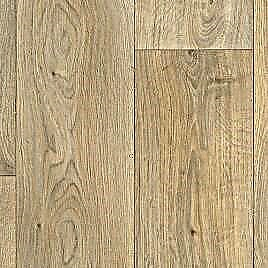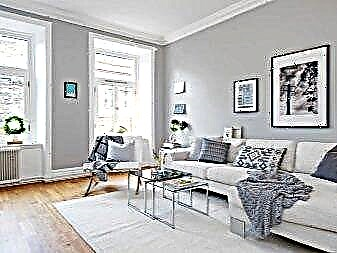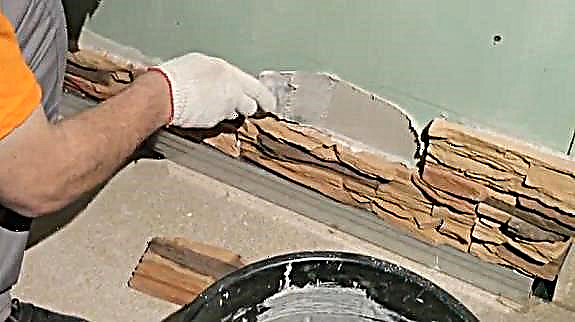

- Built-in width - 60 cm
- Installation Type - Hanging
- Productivity - 290 cubic meters / hour
- Power - 160 W

- Built-in width - 50 cm
- Installation Type - Hanging
- Productivity - 320 cubic meters / hour
- Power - 120 W

- Built-in width - 50 cm
- Installation Type - Hanging
- Productivity - 200 cubic meters / hour
- Power - 113 W

- Built-in width - 60 cm
- Installation Type - Hanging
- Productivity - 340 cubic meters / hour
- Power - 180 W


- Built-in width - 60 cm
- Installation Type - Hanging
- Productivity - 290 cubic meters / hour
- Power - 160 W
- Built-in width - 50 cm
- Installation Type - Hanging
- Productivity - 300 cubic meters / hour
- Power - 110 W
- Built-in width - 60 cm
- Installation Type - Hanging
- Productivity - 330 cubic meters / hour
- Power - 120 W

- Built-in width - 50 cm
- Installation Type - Hanging
- Productivity - 285 cubic meters / hour
- Power - 140 W

- Built-in width - 60 cm
- Installation Type - Hanging
- Productivity - 320 cubic meters / hour
- Power - 120 W

- Built-in width - 60 cm
- Installation Type - Hanging
- Productivity - 320 cubic meters / hour
- Power - 120 W



- Built-in width - 50 cm
- Installation Type - Hanging
- Productivity - 550 cubic meters / hour
- Power - 240 W



- Built-in width - 60 cm
- Installation Type - Hanging
- Productivity - 310 cubic meters / hour
- Power - 135 W
Types and materials of hoods
The name is associated with their design, reminiscent of a dome, which contributes to the most efficient capture of air and its supply to the filtering system. In almost all cases, the dome hood operates in the flow mode of air output outside the kitchen.
There are several types of designs of domed exhaust devices according to the installation method:
- Fireplace. Reminiscent in appearance of exhaust systems installed above fireplaces, hence the name and style - a classic. Usually mounted on walls above a stove.
- Corner Quite a rare species, designed exclusively for mounting in the corner above the stove.
- Recessed. They are installed in the cabinet of the kitchen set, which allows not to spoil the appearance, disrupting the interior of the kitchen.
- Island. Actual when used in large kitchens with a hob located in the middle. Mounted directly to the ceiling using a telescopic duct or cable system.
In the manufacture of dome models, a wide range of materials is used, the most common of which are:
- Plastic. The most commonly used material for the production of hoods due to its low cost, practicality, durability.
- Steel. More expensive material in production, three types are used: enameled, stainless, with powder coating.
- Wood and glass. Sometimes wooden samples are made according to individual projects of designers, but mainly these materials are used to decorate or decorate the contour.
Main characteristics

In addition to the unusual appearance, this type of hoods is more effective than classic counterparts
Mode of operation
Two operating modes are used: recirculation and flow. In the first case, the air remains in the room and is passed through 2 filters: grease and coal, the second method involves the disposal of exhaust air outside the kitchen.
The most common combination type, combining both the recirculation and the outlet method of air purification.
Performance
The main parameter of the hood, characterizing the effectiveness of its work, indicates the amount of air passing through it for an hour. In the calculation, sanitary standards are taken into account, according to which the air flow in the room should be updated 10-12 times per hour.
When calculating the throughput, the kitchen volume is multiplied by 10 or 12, this value increases with a hood height above the stove over 85 cm.
Filters
Typically, grease filters are designed to trap small particles of fat, are made in the form of reusable nets of metal (steel or aluminum), or disposable synthetic materials.
Disposable charcoal filters for ultrafine cleaning of air from odors, harmful gas and vapor impurities need to be replaced periodically, so it is better to purchase several filters in advance before buying (most models are not equipped with carbon filters).
Pollution indicator

Do not forget to rinse the filters thoroughly, so your hood will be at the peak of its efficiency
When the filters are dirty, the hood performance is significantly reduced, the load on the electric motor is increased, and the quality of air cleaning is deteriorated. The indicator is applied to the filter itself or the housing gives a blinking signal.
Number of engines
Standard hood hoods for a kitchen of 60 cm. Usually have one engine, but sometimes 90 cm. Dome models can have a second engine, which leads to an increase in power, noise and, accordingly, cost.
Types of management
Distinguish between electronic and mechanical control. In the first case, the operation mode of the exhaust device is changed using mechanical buttons or sliders and is usually used in budget models.
Electronic methods are used in more expensive versions, which allows you to use convenient automatic programs or use a display on which you can display useful information.
Suction width
Basically, the industry produces standard 60 cm kitchen hoods designed for a cooking surface of the same width, models of 50 and 90 cm are also often found, but you can find samples whose sizes range from 10 to 220 cm.

Wide additional functionality, not only help when cooking, but also save money when consuming electricity
Noise level
It depends directly on the power of the hood, the design and the intensity of its work, as well as on the performance of the ducts.
Anti-return valve
Prevents air from entering the general ventilation system into the kitchen when the hood is off.
Timer
Allows you to independently turn on, off or switch the hood to the programmed mode.
Backlight
To illuminate the hob, models are equipped with various types of lamps: incandescent, fluorescent, halogen. The latter is the best option in terms of efficiency, light transmission and flux intensity at small sizes.
Popular models
Hoods are produced by a wide range of well-known companies, the products of the following brands are most known on the market: Gefest (Belarus), Bosch (Germany), Electrolux (Sweden), Backer (Germany), Akpo (Poland), Shindo (China), ARDO (Italy), Teka (Spain), BEST (Italy), CATA (Spain), Elikor (Italy), Faber (Italy), Exiteq (China), Fagor (Spain), Gorenje (Slovenia), Jetair (Italy), Smeg (Italy).
Features
- Filtration Method: Retraction,
- installation width: 60 cm.,
- case: white,
- filter: grease,
- engine: 1,
- speeds: 2,
- management: mechanics, buttons,
- output volume: 180 cu. m / h.,
- Backlight: 25 watts lamp. x 2
- maximum noise: 55 dB.,
- weight: 5 kg.
Dome 60 cm hoods are one of the most adapted and sought-after types of hoods for working in kitchens with an air duct. The industry produces a wide range of models of various price ranges, the most fashionable and widely used at the present time are the inclined views.
Benefits & Features
Kitchen hood hoods cannot be confused with the rest: all models of this type have a three-dimensional and large shape, usually resembling a hemisphere or trapezoid. This design allows you to use inside not only the most powerful fans, but also several high-quality filters, so many experts note that it is these hoods that work most efficiently.
Cleaning in such devices can be done in two ways: by recirculating the air - and returning to the room after processing, as well as by connecting to the ventilation shaft.
It is recommended to install exhaust hoods in isolated rooms with plastic windows and doors where fresh air is not always possible.

When planning the installation of a domed hood, think in advance which filters are right for you. Such devices may include grease absorption and carbon filters. The first option is removable: such filters are usually mounted on the outside of the hood and are designed to trap fatty residue. For safety, they must be cleaned with detergents.
The second option is internal filters. They help to absorb fumes and eliminate odors after cooking. To maintain hood operation, these filters must be replaced as they become dirty.
Since modern the equipment operates at sufficient power to clean even spacious rooms, there is no clear answer which hoods are better: flat or domed.
You can verify the reliability of dome hoods in practice, but for now, check out their advantages:
- high performance: many hoods not only thoroughly clean the air, but also remove burning odors,
- variety of shapes and sizes: 50 cm dome hoods for the kitchen and larger models are on sale,
- ease of installation without professional help
- significant price range: both budget and expensive models do their job well,
- design choicesuitable for the kitchen with a ready-made design.
Each buyer seeks to purchase the best appliances for the kitchen. In order for you not to make mistakes in the process of acquiring the hood, we recommend that you first familiarize yourself with the varieties of domed hood technology.

Choosing a kitchen hood should start with installation zone definitions such equipment. If the headset with a hob is placed against the wall, a fireplace type hood is suitable for you. It has a flat back side, so it does not cause difficulties during the installation process.
If the corner of your kitchen is set aside for the cooking zone, stop at the corner hoods: thanks to their special shape, they are much easier to integrate into the space between two adjacent walls.
For island kitchens, hoods are suitablewhich are attached not to the wall, but to the ceiling. Another name for this model is a hood-hood for the kitchen.

Dome hoods may differ in the nature of the materialused in out design. The most common are metal hoods. For example, confidence is given to steel structures, especially those that coated with protective enamel or special paint.
Materials must withstand periodic cleaning and sudden temperature changes. Of the color models of the exhaust technology, it is better to give preference to hoods painted using the powder method: such a surface, in comparison with enamel, is more wear-resistant.
For ease of use, manufacturers are gradually moving away from standard push-button models of hoods: they are more difficult to clean, and over time, the buttons are wiped and lose their appearance. Therefore, you can purchase hoods with touch control and liquid crystal displayas well as models switched on and off remotely.
The sizes of dome hoods can also be different. It is better not to choose a model with minimal parameters, since ideally such the design must match the size of the hob. The best option is considered to be kitchen hoods 60 cm, but models with a width of 90 cm or more are on sale.

When buying a dome hood, consult regarding the intricacies of its installation. As a rule, the technical documentation displays optimal height of the exhaust device above the hob.
To properly fix and connect the hood, you will not need special skills, so let's figure out the main stages of such work.
Installation Rules
The installation of the dome hood can be done in different ways: some models are attached to the ceiling, others to the wall, but, in any case, they require electricity, so pre-select a free place, which is easier to conduct electricity.

The hood is mounted after installing the furniture and headset. First, measure the parameters of the case - and make marks on the surface to which the equipment will be attached. The distance between the cooker hood and the stove must exceed 70-80 cm: for gas and electric hobs these parameters can vary.
After marking, drill several holes in the wall: dowels will be inserted into them and bolts will be fixed that will hold the support for the exhaust device. If the hood hood is attached to the ceiling, be sure to choose sturdy holders.
For the installation of dome hoods with exhaust air required the presence of a corrugation or a special pipe that will transmit air to the ventilation shaft. The duct can have both round and rectangular shape: it is purchased separately. For greater reliability, all seams and joints must be sealed.
After the duct is connected, you can proceed to the next stage - installing filters. Consider the correct ratio of filter sizes to the width of the hood hoods, if purchased separately.
Having convinced of the reliability of fastening, the correct connection of communications and the tightness of the system, you can proceed to a trial run. Casing fixingif it is available in the purchased model - the last stage of installation work.
Design hood hoods
Classic domed hoods have a metallic color and a triangular shape: such models are suitable for any design, as they do not catch the eye and are in harmony with other types of equipment. If you want the exhaust hood to become the focus of the kitchen design, you can choose more diverse models.
For example, black dome hoods will look spectacular in the interior of hi-tech, loft or modern. In such a design, it is appropriate to use a technique that combines several materials, for example, metal and glass.
In the interior of the classic, the hood hood should look simple, but presentable: models of white shades, complemented by wooden elements, are suitable for you.
Country style and Provence are popular hoods, decorated not only in wood but also in copper or bronze. You can add charm to the old-fashioned design by hanging a snow-white or beige domed hood with patterns and drawings.
Some of the materials such hoods are made of can be repainted in brighter shades.

When choosing a suitable design for the hood hood in the kitchen, pay attention to the variety of shapes. Today, not only semicircular, but also trapezoidal, rectangular and other shapes are popular.
Price overview
Many doubt that it is possible to purchase high-quality and powerful dome hoods inexpensively. In fact, the cost of such equipment will depend not only on work efficiency, but also on the design, size, brand of the manufacturer.
For example, a hood hood for a 90 cm kitchen Elikor brand will cost from 9 thousand rubles, while the cost of Bosch appliances with similar parameters will be more than 13 thousand.
The minimum prices of dome hoods of famous brands will be:
- from manufacturers Elikor and Gefest - from 2.5 thousand rubles,
- for Hansa equipment - about 6.5 thousand,
- hood type Krona hoods will cost at least 7300 rubles,
- Bosch - from 10 thousand,
- Siemens dome hoods cost at least 13.5 thousand rubles,
- Miele and Electrolux appliances are one of the most expensive: high-quality hoods will cost more than 45 thousand.
Reviews
About how well this technique works, it is better to learn from real reviews about hood hoods of popular brands.

Nikolay, Pskov: Not so long ago, updated the technique in the kitchen. Prior to that, I used a compact hood-slider: over time, it clogged so much that it hardly came out when turned on. Therefore, I decided not to experiment anymore - and chose a dome model with button control. He stopped on the Hansa technique.
During the installation, I had to tinker with adjusting the hood parameters to the finished kitchen: as I did not try to mount the case in the wall cabinet, there was not enough space, so I had to completely free up this space. At this stage, I realized that I had guessed with the design: my dome hood is white, like the rest of the appliances in the kitchen, so it looks harmonious.
If we talk about performance, then I did not note significant shortcomings. During operation, the hood is noisy, but I do not think that other models with such power would be completely silent. This does not bother me in any way, but now I'm sure of the clean air in the kitchen. And the price of the hood is acceptable: the past cost me more.

Catherine, Tver: I thought for a long time whether it is worth saving on the hood. I never really worried about the quality of her work, since our natural ventilation is quite tolerable. And then my husband began to smoke in the kitchen - and our old model could not cope with such a load. As a result, we purchased a 90 cm classic hood from Bosch in the kitchen.
It costs a lot, but it's more about power, not design. According to the documentation, even when working at the second speed, it perfectly cleans the 10-meter space (there are 4 such modes). The filter is removed by a light pressure on the valves, cleaned with standard detergents. I also periodically wipe the inside of the hood.
The model combines standard air exhaust and circulation, therefore, a double effect is obtained. So I'm happy with the manufacturer: adequate price, given the capabilities and quality of work.
Of course, hood type hoods are more suitable for owners of spacious kitchens. But even if your room is limited in size, such a model can be quite harmoniously fit into the interior.
One of the advantages of dome technology is variety of design, therefore, before you open up the possibility of acquiring not only powerful, but also stylish exhaust devices.



